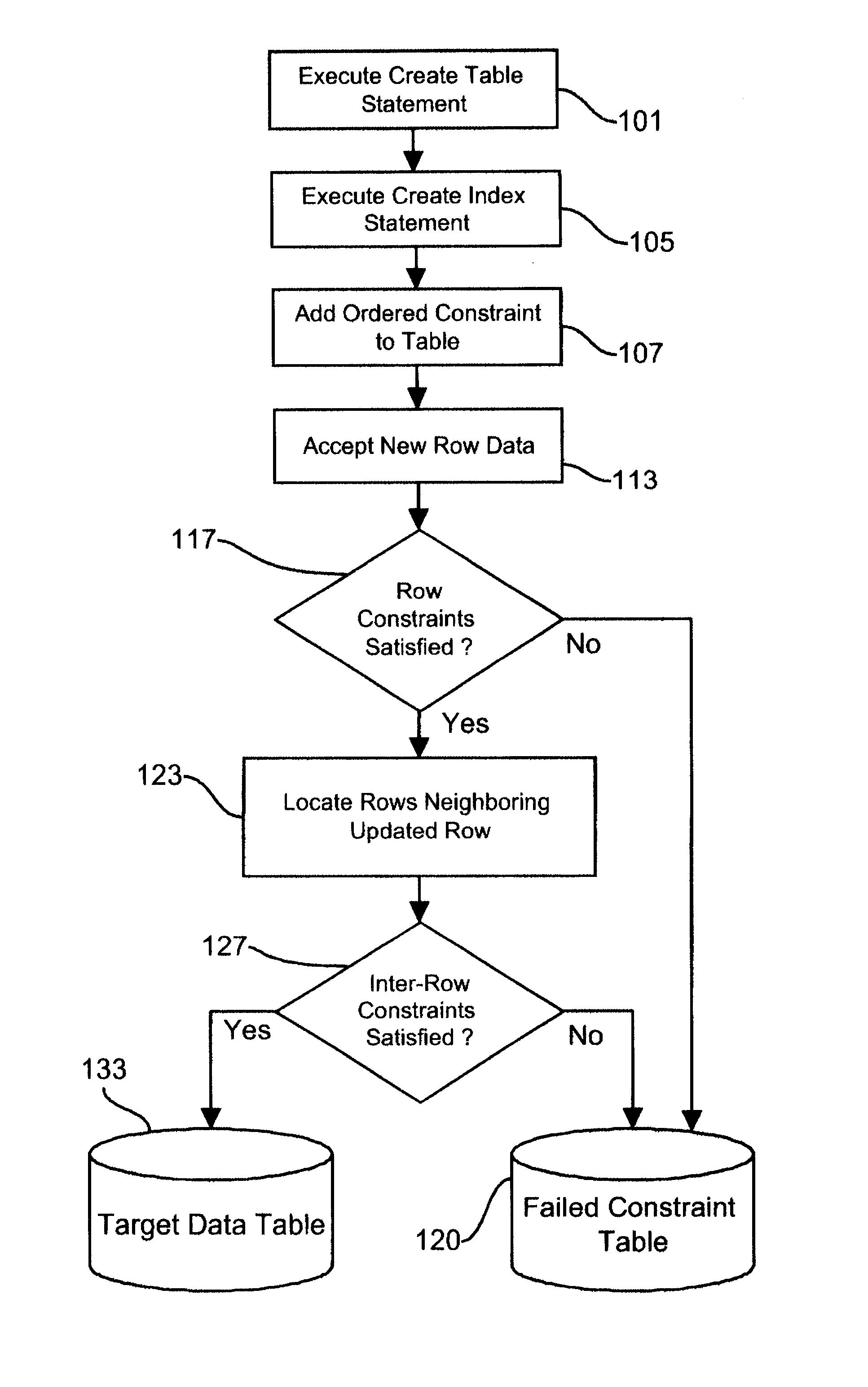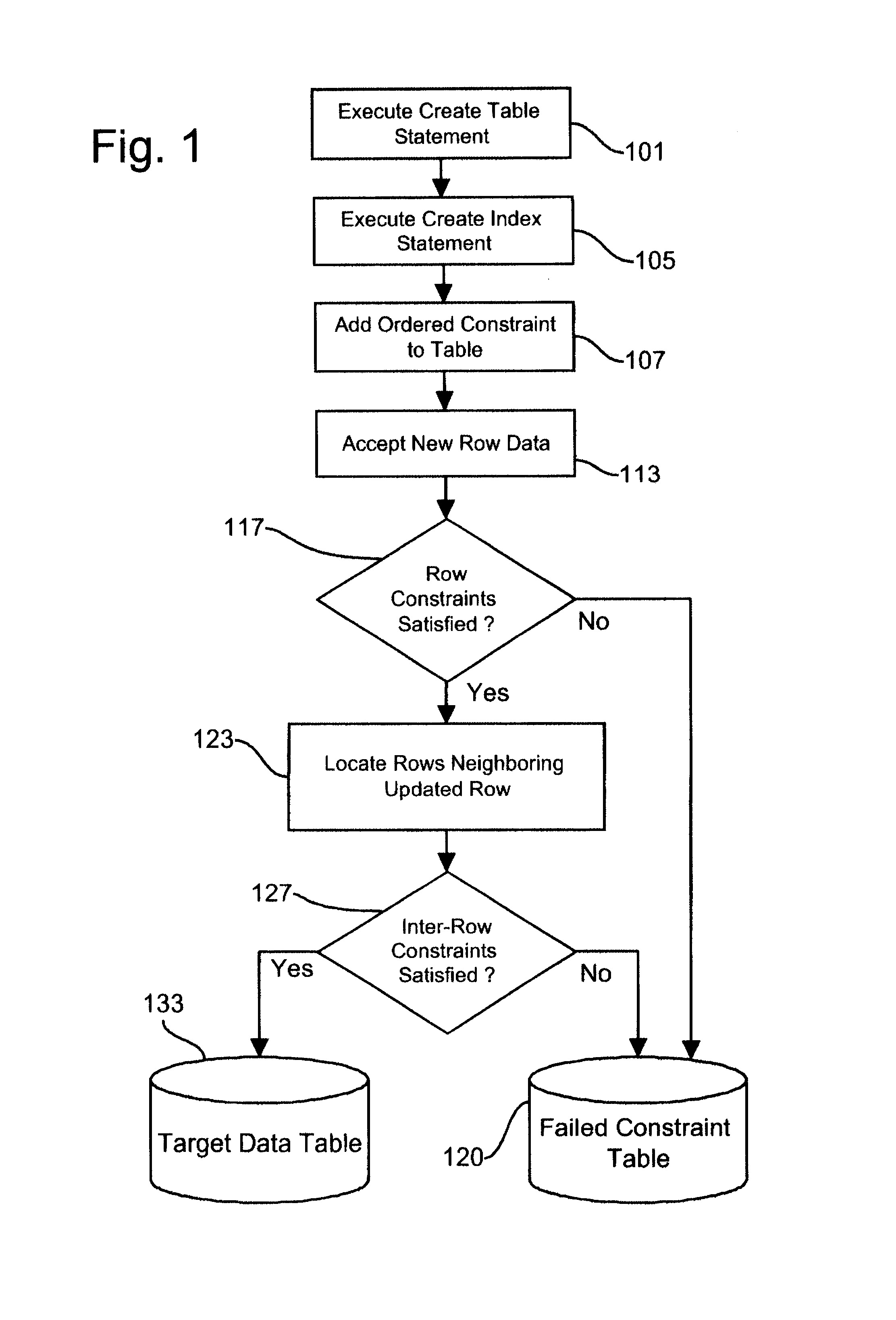Generalized method for modeling complex ordered check constraints in a relational database system
a database system and ordered check technology, applied in relational databases, data processing applications, instruments, etc., can solve problems such as inefficient processing, inability to express and enforce important business rules, and failure to attempt modification with a constraint violation, so as to achieve efficient enforcement of conditions and easy specifying
- Summary
- Abstract
- Description
- Claims
- Application Information
AI Technical Summary
Benefits of technology
Problems solved by technology
Method used
Image
Examples
first example
[0058]Suppose a table has been created in a human resources database with empno, hire_date and salary columns where empno is a primary key. To constrain that salary is a decreasing function of hire date (or, equivalently, that salary is an increasing function of seniority), the following ordered constraint clause may be written:[0059]ORDERED CHECK ORDER BY hire_date, empno (LAG(salary)>salary)
To illustrate how this constraint behaves, consider the following instantiation of this table, which is sorted on:
[0060]
hire dateempnosalaryFeb. 02, 19921212800 Apr. 04, 1994346400Apr. 04, 1994561600
The relationship between three row pairs is constrained:[0061]1. empno #12 is the LAG row and empno #34 is the current row—12800>6400, OK.[0062]2. empno #34 is the LAG row and empno #56 is the current row—6400>3200, OK.[0063]3. empno #56 is the LAG row and empno #78 is the current row—3200>1600, OK.
[0064]The following ordered check constraint is not valid because the condition refers to columns outs...
second example
[0066]Suppose a tax schedule table is created with with four columns: filing_status, AGI_lower_bound, AGI_upper_bound and marginal_rate where is a primary key. Furthermore, suppose the table values are to be constrained so that no two rows for the same filing status have overlapping AGI ranges and that for every filing status there are no gaps in the AGI ranges that are covered. As an ordered check constraint, this is written:[0067]ORDERED CHECK PARTITION BY filing_status ORDER BY AGI_lower_bound (LAG(AGI_upper_bound)=AGI_lower_bound)
[0068]Consider the following instantiation of this table that is logically partitioned by filing_status (the horizontal lines indicate partition boundaries) and that is ordered within each partition on AGI_lower_bound:
[0069]
marginalrowidfilingstatusAGI lower boundAGI upper boundrate1single0150000.152single15000800000.283single800002500000.314married0200000.155married200001000000.286married1000002500000.317head-of-house02500000.32
[0070]In this case ther...
PUM
 Login to View More
Login to View More Abstract
Description
Claims
Application Information
 Login to View More
Login to View More - R&D
- Intellectual Property
- Life Sciences
- Materials
- Tech Scout
- Unparalleled Data Quality
- Higher Quality Content
- 60% Fewer Hallucinations
Browse by: Latest US Patents, China's latest patents, Technical Efficacy Thesaurus, Application Domain, Technology Topic, Popular Technical Reports.
© 2025 PatSnap. All rights reserved.Legal|Privacy policy|Modern Slavery Act Transparency Statement|Sitemap|About US| Contact US: help@patsnap.com



